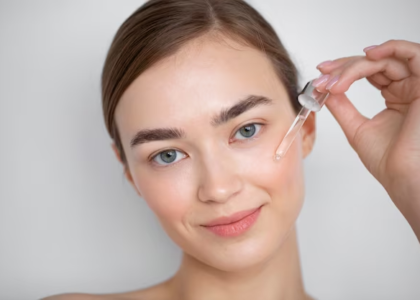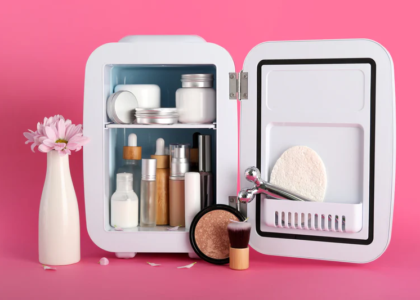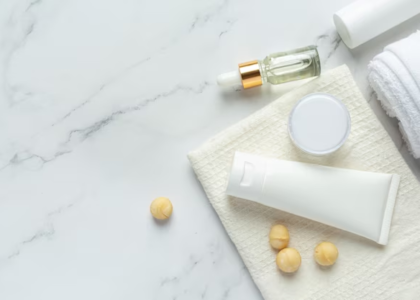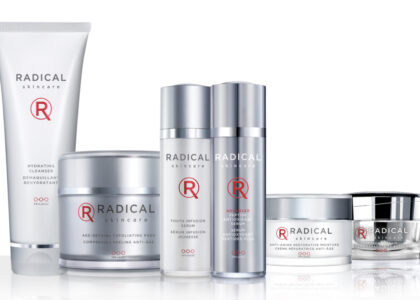Embarking on a journey to a fresh destination often fills one with anticipation and excitement. However, the intrigue is often dulled by a common travel dilemma: the packing of cosmetics for the journey ahead. Jane, a frequent traveler, constantly grappled with this. “Which cosmetics can I take on board? How do I classify nail polish? How should I streamline my travel makeup bag?” She mused. Fortunately, the guide below sheds light on these questions.
Hopping on a plane soon? Be cautious when packing beauty and skincare items in your carry-on. An oversight could lead to your precious items being seized. It’s essential to abide by the Transportation Security Administration (TSA) regulations to breeze through security checks. Dive into the TSA’s guidelines below to ensure your favourite items are travel-ready.
Deciphering Your Travel Makeup Bag Contents
Skincare Essentials
The TSA’s 3-1-1 rule is a longtime staple for packing liquids. In essence, liquids should be stored in 3.4-ounce containers or less, all fitting into a transparent quart-sized bag. This encompasses sunscreens, makeup, lotions, and shampoos. Gel and cream-based skincare products also fall under this guideline.
Makeup Must-haves
Navigating the labyrinth of travel regulations for makeup can seem daunting, especially for those who view their beauty routine as an indispensable part of their day. Liquid makeup items, from the volumizing mascaras to the full-coverage concealers, all need to toe the line of the 3.4-ounce regulation. But this shouldn’t mean compromising on your look. There are many high-quality, travel-sized versions of popular makeup items available in the market today. Investing in these can ensure you look your best without flouting any travel rules.
Solid makeup items, though seemingly straightforward, come with their own set of guidelines. Powders, whether they’re your trusty setting powder or a vibrant eyeshadow palette, if exceeding 12 ounces, demand their own moment under the X-ray scanner.
Nailing the Nail Polish Rules
Given its petite size, nail polish is relatively hassle-free to pack. As long as it’s under 3.4 ounces, it’s carry-on friendly. Nail polish, for many, isn’t just a cosmetic choice but a personal expression. The colors and finishes you choose can reflect your mood, your outfit, or even the essence of your destination. When traveling, consider packing versatile shades that can complement various attires and settings. Multi-function products, such as base and top coat combinations, can also save space and time.
Yet, while it might be tempting to touch up your nails during long flights, it’s essential to consider the cabin’s confined environment. The strong scent of nail polish can be quite overpowering in such close quarters, possibly causing discomfort or even allergic reactions to fellow passengers. Additionally, the cabin’s dry air can make the polish take longer to dry, increasing the chance of smudging.
In your checked baggage, being aware of the Federal Aviation Administration (FAA) regulations is crucial. The 70-ounce limit encompasses a wide range of toiletry and cosmetic items, so it’s essential to prioritize. While most individual nail polish bottles will be well under the limit, remember that this total also includes other products like hairspray, hand sanitizers, and nail polish removers. If you’re someone who loves to have an array of nail colors on hand, consider investing in mini nail polish sets. These not only meet regulatory guidelines but also offer you a variety of shades without the weight and bulk.
Haircare Hints
All liquid haircare products, be it shampoo or hairspray, should be under 3.4 ounces and fit into the quintessential clear bag. The modern traveler often finds it challenging to downsize their haircare routine, especially given the myriad of products available. While there are travel-sized versions of most haircare products, you could also consider DIY approaches. For instance, diluting your favorite conditioner with a bit of distilled water can help you stretch its use while adhering to the TSA regulations. Alternatively, many seasoned travelers vouch for the benefits of solid haircare items. Not only are they compact and TSA-friendly, but they are also eco-friendly. Solid shampoo or conditioner bars, for instance, come with minimal packaging and last for many washes, making them both sustainable and cost-effective for frequent travelers.
Body Care Basics
Lotion, creams, and other liquid bodycare products follow the 3.4-ounce rule. Wet wipes and makeup wipes, meanwhile, can be freely packed in either carry-on or checked baggage. The body’s need for hydration and care doesn’t diminish while traveling. If anything, the rigors of travel, varying climates, and exposure can take a toll. Thus, packing essential body care items becomes vital. When choosing lotions or creams, opt for multi-purpose products. For instance, a hydrating lotion with SPF can save space and keep your skin protected. Similarly, packing biodegradable wet wipes not only ensures you remain refreshed but also promotes responsible tourism by reducing waste.
Perfume Pointers
As long as your perfume bottle is under 3.4 ounces, it’s good to fly. For a smoother journey, investing in a travel-sized variant might be wise. Perfume, for many, is an integral part of their identity. It evokes memories, sets moods, and often leaves lasting impressions. When traveling, opt for sturdy bottles that don’t leak. Also, consider solid perfumes or roll-ons, which are compact and reduce the risk of spillage. Many luxury perfume brands offer travel sets, allowing you to carry a variety without compromising on space. When packing, keep your perfume in a separate zip-lock bag, ensuring that even in case of any mishap, it doesn’t affect other items.
Medication Measures
When it comes to medication, always prioritize your carry-on. This ensures you have your essential meds even if your checked baggage goes missing. For liquid medical essentials beyond 3.4 ounces, inform the TSA officers for a smooth check. Traveling with medications requires an extra layer of precaution. Always carry prescriptions, especially for controlled substances or injectables. Keeping a digital copy on your phone can also prove handy. For those on regular medication, using a pill organizer can ensure you maintain your regimen even on the move. It’s also a good idea to keep a list of generic names for your medicines. In case you run out or lose them, having this list can help in obtaining replacements in a foreign land. Lastly, if traveling internationally, research the destination’s drug regulations to avoid potential legal complications.
Jane realized that maintaining her beauty regimen on the move was feasible. She only needed to adhere to the 3-1-1 rule, ensuring all her products were below 3.4 ounces, placed in a transparent quart-sized bag, and packed in her carry-on. With this in mind, she was all set to fly stress-free.
To wrap up
As Jane prepared for her journey, she reflected on the broader implications of her newfound knowledge. Travel, she realized, was not just about reaching a destination but also about understanding the nuances of the journey itself. Just as it’s crucial to be mindful of the cultural norms and etiquettes of the places we visit, it’s equally important to recognize and adhere to the regulations set by institutions like the TSA. These rules, though they might seem restrictive at first glance, are in place for the safety and well-being of all travelers.
Navigating through airport security smoothly is an art that requires a blend of awareness, preparation, and patience. Our personal beauty and care routines are deeply intertwined with our daily lives, making them indispensable even when we travel. By aligning our packing habits with established guidelines, not only do we ensure a seamless boarding experience, but we also contribute to a collective sense of security and order within busy airports. Jane’s realization emphasizes the larger narrative that travel isn’t merely a physical journey—it’s an ongoing learning experience.
Moreover, understanding these rules offers an opportunity for travelers to innovate. The rise of solid shampoos and conditioners, for instance, is a testament to how constraints can lead to creativity. These sustainable alternatives are not only TSA-friendly but also environmentally conscious.
In conclusion, as the world becomes increasingly interconnected, and travel becomes more accessible, it’s imperative for each traveler to be informed and adaptable. Jane’s preparation for her trip serves as a reminder that the essence of travel lies in the details. By embracing regulations, seeking sustainable alternatives, and adopting a flexible mindset, we can make our journeys as enriching as the destinations we aim to explore.





